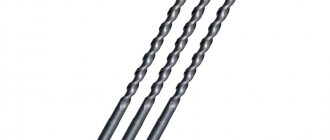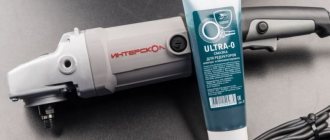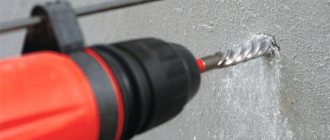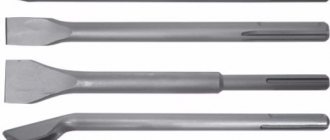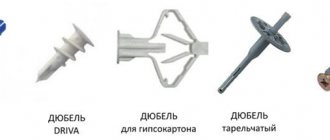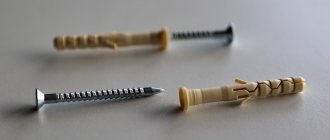Why are lubricants needed when drilling metals?
Strong heating during drilling is a serious problem.
At the point of contact between the tool and the workpiece, the temperature reaches hundreds of degrees Celsius. When overheated, materials begin to burn or melt. This applies to both drills and processed metals.
- The steel from which the tool is made loses its hardness when heated strongly. As a result, the cutting edges wear out quickly. This leads to a significant increase in friction force. Because of this, processing efficiency decreases and drills quickly fail. It is necessary to use cutting fluid (coolant) even when using carbide drills.
- Strong heating, if the part begins to melt, will affect the quality and geometry of the hole. This is unacceptable in many cases.
- Another side effect of drilling metal without lubrication is rapid wear of the drilling machine motors. Constant overload leads to it. The result is expensive repairs.
It is these problems that cutting fluids solve.
Note! For cooling, in no case should you use unsuitable means at hand (water, solvents, anti-freeze, alcohol, glass washing liquid, etc.). For example, the use of water instead of the recommended coolants leads to corrosive destruction of workpieces, as well as the working beds of machine tools.
What is lubricant used for?
We are talking about a substance that is designed to reduce the friction force between the drill and the surrounding part of the plate. It must be remembered that during the work process not only longitudinal, but also rotational movements occur. Without special measures, this can lead to rapid destruction of the tool. Such work is accompanied by the formation of a large amount of dust, which enhances the negative effect of friction.
Lubrication of the main components of a rotary hammer Source stroy-podskazka.ru
In addition to the drill, other parts are also exposed to friction: piston, drill, gearbox. The use of lubricant cannot completely protect the hammer from the effects of friction, but it can significantly extend the life of the tool.
During work, the substance used quickly becomes saturated with dust and becomes less effective. In this regard, it is necessary to re-process regularly.
Disassembled hammer drill Source stroy-podskazka.ru
Reduced friction and heat dissipation
To protect the drill from overheating and dulling, add machine oil to the place where it comes into contact with the metal. Once in the drilled hole, the oil spreads along its walls. A film forms between the rotating drill and the walls, which reduces the friction force. This prevents the metal from heating up quickly.
But because During operation, the drill removes metal shavings with its cutting edge, but it still heats up. The generated heat is immediately transferred to the oil film, which, when heated to a certain temperature, burns out or evaporates. Burning out or evaporating any liquid takes a lot of thermal energy. In this case, this energy is taken from the working drill, causing it to cool.
To cool the drill, you can also add regular water or brake fluid. The effect, of course, will not be the same as with oil, but the drill will not overheat.
Using the correct coolant
Coolant volume, pressure and flow direction are very important in drilling operation, but if the coolant is not prepared correctly, it is difficult to obtain excellent working conditions and reap greater benefits. It is necessary to communicate with the coolant supplier to optimize the level of concentration and additives for drilling each specific material. Proper coolant preparation is more than just adding a lot of water. This is the most important mistake, which reduces the level of coolant concentration, reducing its oiliness and reducing its thermal properties.
Additional technical information can be read in the “Articles” section.
Economic feasibility of using cutting fluids
The use of recommended cutting fluids is completely justified from an economic point of view. This is proven by the results of various tests.
An excellent example is data from the Karnasch plant (Germany). A test was carried out on it in which two core drills were used to make holes with a diameter of 25 mm in steel 10 mm thick. When drilling with the first drill, a 7% emulsion solution was used, and when processing the material with the second tool, water was used. In the first case, it was possible to drill 1,500 holes, and in the second, 835. This is 45% less.
On average, if we take into account the cost of coolant, the economic costs of metalworking are reduced by 15%. At the same time, the service life of the machine is extended. This fact is also worth taking into account.
Video description
Lubricating the hammer drill chuck.
When choosing a substance, you need to take into account that, for example, what you use to lubricate a hammer drill is not always suitable for processing a gearbox. For each of the nodes, it is necessary to use the substance recommended specifically for this node.
Applying lubricant to the drill Source srbu.ru
In modern instruments, plastic parts may be used in some cases. Here you cannot use the same means as for metal parts. For this, silicone grease is used.
For tail nozzles, thicker mixtures are used. This is caused by the significant loads that this part of the tool experiences. Usually the packaging indicates whether it is suitable for processing drills. The technician must carefully choose which lubricant to use for the hammer drill.
Detailed diagram of the hammer drill Source burforum.ru
The most popular products for the purposes under consideration are the products of the following manufacturers:
- Makita lubricants are designed to care for drill bits.
- Turmgrease mixtures have universal use.
- Bosch products are suitable for both gearboxes and tail parts of attachments.
- Lubcon Thermoplex lubricants are designed for gearboxes.
- Nanotek products are well suited for lubricating the drill tail.
- The mixture from Kress is used for drills.
The use of branded products must be in accordance with the instructions supplied with them.
The drill shank experiences significant loads during operation. Source zuzako.com
How to cool a drill when drilling metal
In industry and everyday life, drills when drilling metals are cooled with various coolants and substitutes recommended for use.
In industry
The following compositions are most often used in production.
| Workpiece material | coolant |
| Stainless and heat-resistant alloys | A mixture consisting of oleic acid (20%) and sulforesol (80%). The last component of this lubricant for drilling stainless steel can be replaced with kerosene (30%) and sulfurized oil (50%) |
| Iron casting | Kerosene, emulsion (3–5%). Deep drilling without cooling is allowed. |
| Malleable iron | Emulsion (3–5%) |
| Zinc | Emulsion |
| Copper | Mixed oils, emulsion. Deep drilling without cooling is allowed. |
| Nickel | Emulsion |
| Brass | Emulsion (3–5%). Deep drilling without cooling is allowed. |
| Bronze | Blended oils. Deep drilling without cooling is allowed. |
| Aluminum and alloys based on it | Kerosene, emulsion, mixed oils. Allows deep drilling without cooling |
| Alloy steel | Mixed oils |
| Tool steel | Mixed oils |
| Structural steel | A mixture of sulfurized oil and kerosene |
| Carbon steel | Sulfurized oil, emulsion |
In this case, various technologies for supplying cutting fluids are used.
- Direct feed. This is done through the channels that many solid and body drills have.
Photo No. 1: coolant supply through the drill channels
External cooling. For this purpose, machines are equipped with special automated systems.
Photo #2: External cooling.
When working with hand-held industrial and household drills, drills are periodically dipped into coolant, and liquids are also poured into the holes using various methods.
At home
At home, the following coolants can be used to cool cutting tools when drilling metals. They are, of course, less effective than specially developed formulations, but they are better than nothing.
| Processed metal | Coolant |
| Aluminum | Soapy water |
| Duralumin | A mixture of castor oil and kerosene |
| Aluminum alloys type D16T | Laundry soap |
| Mild steels | Castor oil, technical petroleum jelly |
| Silumin | Turpentine diluted with alcohol |
If you do not have any components, you can prepare a universal coolant for drilling metal at home.
- Take 200 g of soap and dissolve it in a bucket of water.
- Add 5 tablespoons of machine oil.
- Boil the solution until you obtain a soapy, homogeneous emulsion.
Choice
The better the composition of the lubricant, the more effective it will be. Experts say that lubricants containing graphite are more preferable for hammer drills. They often surpass branded mixtures in their beneficial effect and are also often more affordable. The use of a lubricant reduces wear, but may cause minor drag and additional heat during tool operation.
The video discusses in detail how to lubricate a hammer drill chuck:
How to drill stainless steel?
Let's look at a few important rules that should be followed when drilling stainless steel. They are also true for other types of carbon steel:
- We set the rotation speed of the electric drill to minimum speed. About 120-150 revolutions are quite enough to work with metal of any thickness. If your tool does not have a speed switching function, then work should be carried out by short pressing the “start” button. Thus, the drill will not be able to accelerate to its maximum speed.
- If you often work with metal, buy a drill stand. It is not very expensive, but it greatly simplifies the process.
- If the chips darken over time, this indicates a dull drill or overheating of the material. It is worth starting work with small diameter drills, for example, a four. Then you can make a hole of the required size, which will be as smooth and neat as possible. This is especially important when drilling stainless pipes. To achieve an ideal result, you need to use special stepped drills.
- Large diameter holes (from 15 mm) are made with a “crown”.
Technology and methodology for drilling stainless steel
The first and most important thing to remember: drill stainless steel only using cooling lubricant and special drills. As for the thickness of the material being processed, the technology provides the following:
- Stainless steel, the thickness of which is within 1–2 millimeters, can be drilled with ordinary metal drills. In this case, the sharpening angle of the tool should correspond to 120 degrees, and the revolutions of the electric drill should not exceed 100 per minute.
- It is better to drill a millimeter-thick or thinner layer of stainless steel using step-type equipment. It provides a smooth channel with no burrs or burrs on the edge.
- It is best to produce holes in stainless steel with a thickness of more than 6 mm using specialized cutters in two stages. First, you need to drill the metal with thin equipment with a diameter of 2–3 mm, and then bring it to the desired diameter with a finishing drill.
If stainless steel shavings begin to acquire dark shades and become small, this indicates that the cutting edges are dull and overheating. It is impossible to work in this mode.
Useful tips for drilling stainless steel
Many different parts and products are made from stainless steel. This metal is in demand due to its resistance to corrosion. During processing, it may be necessary to make a hole in it using improvised means. The fact is that the alloy differs from ordinary steel in its increased viscosity, and this is fraught with rapid failure of the cutting tool due to overheating. And here the question arises, how to drill stainless steel at home. Video tutorials on this topic will only help if you know the intricacies of such operations. Not everyone can afford a specialized machine that allows easy processing of the alloy. In a home workshop, you can often count on a regular drill and the same drill bits. Therefore, craftsmen have a whole arsenal of tricks that help them effectively drill through stainless steel.
When working with turning or drilling equipment, you need to be extremely careful and not violate safety rules when operating electrical machines.
What kind of drill to drill stainless steel - Machine tools, welding, metalworking
Industrial development and high requirements for product certification in international markets lead to the widespread use of high-quality stainless steels. When creating projects, designers prefer welding connections of individual components.
The bolted and rivet connection was not affected by this and is often used in modern structures. Drilling of stainless steel may be necessary to create process holes. The material presented in this article will give general concepts and features of this process with anti-corrosion alloys.
Preparatory work
Preparatory work consists of eliminating some of the negative factors associated with drilling stainless steel. Let's look at what properties make this process difficult:
- The chemical composition of stainless steel grades helps to increase the ductility of the metal. When drilling such steels, chips stick to the drill, causing the cutting edges to be excluded from the process, and hardening forms on the walls inside the unfinished hole. Such surface hardening makes further processing difficult and changes the physical properties in this place.
- Heat is removed from the drill heated by rotation and cutting along the surface of the metal. Without taking preventive measures, you can end up with a tarnished area around the drilling. In addition to the damaged decorative surface, this reduces corrosion resistance and requires additional technological operations to restore the specified parameters.
To avoid the disadvantages described above, before drilling it is necessary to decide how the surface will be cooled and what to do to prevent chips from sticking. Among the effective methods, water is suitable. If the volume of metal being drilled is more than one hole with a diameter of 10 mm in a sheet of 2 mm thickness, then you should consider cooling with oil or a special emulsion.
Attention. Cooling with water when drilling stainless steel occurs during the process itself. Cooling by lowering a hot drill into a jar standing nearby leads to hardening and tempering of the metal and loss of basic properties. Coolant is supplied to the contact point when drilling. To reduce consumption, you can place a rubber ring on the surface, surrounding the contact point.
Drilling modes
The correct choice of drilling mode is the key to obtaining a high-quality hole. The main components are speed, feed and torque.
Cutting speed is a conditional value that determines how quickly a point located on the surface of the tool rotates relative to its center. This means that different drill diameters require different speeds to achieve the same cutting speed.
Example. For steel 08Х13Н with a thickness of 10-15 millimeters, the reference book indicates a cutting speed of 20 m/min. If it is necessary to drill a hole with a diameter of 1 mm, the spindle speed of the drilling machine should be 6366 rpm. If a hole is drilled with a diameter of 10 mm, then the revolutions should not exceed 637 revolutions in 60 seconds.
The feed of a drill into metal means the amount of movement into the depth of the hole being drilled for a certain number of revolutions. That is, this is the sinking speed. Measured in millimeters per revolution. It is important to maintain the recommended values to obtain a high-quality result and reduce the impact of chips on the cutting edges.
The torque transmitted to the drill during the drilling process is an important factor for the drill and the material, determining the choice of steel for the drill and the composition of the coolants. In ordinary words, this is the load on the drill resulting from the resistance of the material to deformations created by the edges of the drill.
The choice of each parameter is determined by the grade of stainless steel, the thickness of the sheet or part, the choice of equipment, the selection of cooling method, drill material, surface roughness and other factors.
There are many reference books and regime maps for the main brands.
The correct selection and high qualifications of the technologist who draws up the regime maps will allow you to avoid additional processing operations and finishing, reducing production costs.
Stainless steel drills
The variety of drilling equipment today can confuse even experienced professionals.
The most common are cobalt drills. Their name indicates the presence of cobalt in the chemical composition of the alloy. A stainless steel drill is a high-speed steel product.
Increasing the percentage of cobalt increases the red-hotness; the alloy will retain its properties after heating to red-hot temperatures.
These include tool steel R6M5K5, the main material for the manufacture of cutting tools for stainless steel in domestic and foreign markets.
In addition to the material, the design of the drill itself is important. The most expensive and high-quality ones are made using technology when grooves are formed on grinding machines.
The absence of deformation stresses makes them stronger and expands drilling parameters. These grooves do not have microscopic burrs and facilitate chip exit, preventing the grooves from sticking.
The sharpening angle of the drill should be 135 degrees. This leads to a reduction in load.
Attention. When you go to the store to buy a drill, do not forget that the presence of cobalt in the drill does not affect its color. The drill should not be yellow, as the sellers claim. This is just a publicity stunt of unscrupulous manufacturers.
Drilling technique
Drilling a hole larger than 6 millimeters must be done in two stages. First, a hole with a diameter of up to 5 mm is drilled, and then brought to the required diameter. The absence of internal stresses before drilling will simplify and expand the range of operating parameters. This will extend the life of the drill and avoid overheating of the surface.
Before drilling into stainless steel, find out its grade, thickness, and recommended drilling parameters. Decide on the coolant. If this is not available, you can use vegetable oil (olive or sunflower), lard, or an emulsion of laundry soap in water.
How to drill stainless steel at home: video, photos, tips
The question of how to drill any stainless steel at home usually does not arise if you use special drills for stainless steel for this purpose. Along with such drills, which allow you to quickly and efficiently form a hole of the required diameter, it is necessary to use special cooling compounds, as well as strictly adhere to technological parameters.
In production, industrial machines with a coolant supply are used for drilling stainless steel. In the home workshop you have to learn some tricky techniques
How to purchase Divinol drilling lubricants?
To buy lubricants produced by the Zeller+Gmelin plant, contact our. We are the official dealer of the German manufacturer in our country. From us you can choose and buy the necessary compounds for metalworking on favorable terms. We provide discounts to regular customers, and participation in the affiliate program to intermediaries and wholesalers. You can view a huge range of products in the online catalogue.
To choose the appropriate compositions, contact our managers by calling the hotline. They will answer all your questions regarding product characteristics and delivery conditions. If necessary, our specialists will visit your enterprise and conduct research into the features of the technological cycle.
Based on the information received, they will be able to select the optimal type of lubricants for machines and mechanisms. Order delivery now. We will process the application within 2 days. In the near future, you will be able to appreciate the benefits of drilling equipment using high-quality German-made lubricants!
Source of the article: https://teplobloknn.ru/instrumenty/sozh-dlya-zatochnogo-stanka.html
Features of lubricant for rotary hammers
The composition of the mixture must be such as to match the operating conditions of the power tool in question. This is possible provided that this substance has the following characteristics:
- One of the important features of this mixture is water resistance. The need for it arises during breaks in the operation of the hammer drill. At the same time, its temperature drops significantly, resulting in condensation of moisture from the air. If humidity is high, this can lead to moisture entering the instrument and reducing the quality of its performance. A waterproof lubricant will protect the metal and will not emulsify due to churning from moving parts of the tool.
- Stain resistance helps prevent dust from entering the instrument. During operation of the hammer drill, it is constantly among small particles that break off from the wall during operation. If they get inside the mechanism, they can greatly increase friction and raise the temperature of the tool. High-quality lubricant will help protect the mechanism from exposure to foreign particles.
- This substance should not form drops during operation. This cannot be completely avoided, since the moving parts squeeze the lubricant out, but the temperature at which they occur must be quite high. The thicker the mixture used, the higher the stability.
- Exposure to high temperatures should not be destructive to the lubricant. When cooled, all the properties of this substance should be restored. A lubricant that does not have sufficient resistance to heat will quickly cease to perform its functions.
- A mandatory requirement is the presence of high adhesion. Since the working parts of the tool are constantly in motion, the lubricant should not jump off them when punching holes in the wall. If the composition satisfies this condition, then during operation a sufficient layer of lubricant will be maintained on all necessary surfaces.
- Rotary hammer assemblies are usually made of alloy steel or aluminum alloys. Exposure to moisture can lead to corrosion and plaque formation. A high-quality lubricant can provide reliable protection for the tool against this.
A good composition must satisfy the listed requirements, but for this the master must use the lubricant that is intended for servicing rotary hammers.
A well-lubricated hammer drill will last a long time Source lkard-lk.ru
